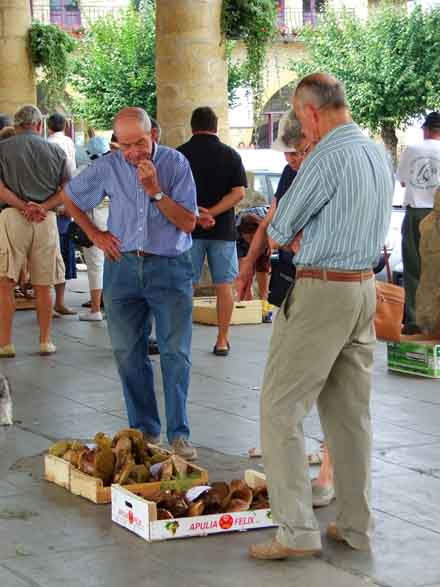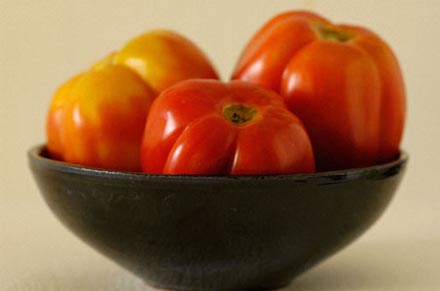Early Autumn in France is marked by a profusion of woodland fungi many of which are edible. Cèpes are chief amongst these and many roadside stalls spring up with trays of them displayed to passing motorists. We stopped and bought some but were confused about which to select – some were very large, some were smaller, some were at a higher price than others. Our French is far from fluent so we didn’t understand some of the finer nuances of the descriptions the sellers gave us. They occasionally broke off the edges of the mushrooms, presumably to demonstrate that they didn’t contain the burrowing insect that surprised us when we prepared some we bought in Northern Italy. A non-consensus decision by one of us saw the purchase of two very large specimens. We cooked them in a simple dish described in Joanne Harris’s the French Market. They were very fresh and cooked nicely in a hot griddle pan to produce firm golden brown slices that we mixed with slices of potato, garlic, walnut oil and parsley. The flavour of the cèpes was very strong which was fine in itself but it did rather overpower the other ingredients, perhaps we were a little generous with the amount. At lunch in a simple restaurant a couple of days later we enjoyed an omelette aux cèpes where the strong flavour was moderated by the creaminess of the eggs.

Yesterday whilst driving through the town on Villefranche we came across a cèpe market. We didn’t understand very much of what was going on there at all! It was held in a covered marketplace but there were no stalls just large trays of cèpes on the floor surrounded by two or three people who were often talking in an animated way with many gesticulations. Each tray had an official looking piece of paper which contained details about the cèpes, including their site of origin but there didn’t appear to be a price. We assume that the people surrounding the trays were negotiating a price amongst themselves because occasionally one of them would pick up a tray and take them to a car. We were also left to speculate what the purchasers were going to do with the cèpes, one man loaded six large trays into the boot of his Mercedes. Were they destined for a large restaurant? Is there a secondary trade in cèpes? (but they don’t keep for much more than day) Were they going to be dried?
The house that we are staying in this week has a woody drive and under some of the trees there are large mushrooms which look like cèpes. In the UK we could buy a mushroom identification book and check their credentials but in France they have a much more practical scheme, all pharmacists are trained in the identification of fungi and they will tell you whether any specimens you bring them are edible or not. Further proof that this is a country which takes food more seriously than the UK.



 Posted by foodmatters
Posted by foodmatters 